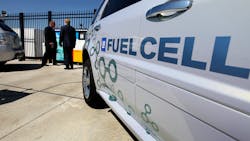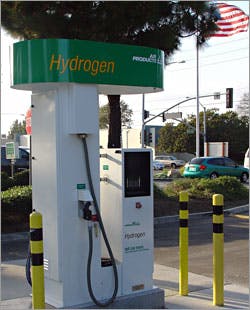The Energy Department’s National Renewable Energy Laboratory (NREL) opened its new hydrogen fueling station in Golden, Colorado on October 8 to coincide with National Hydrogen and Fuel Cell Day. This particular date was chosen since its numerical representation matches hydrogen’s atomic mass of 1.008 amu.
The station is an addition to NREL’s Hydrogen Infrastructure Testing and Research Facility (HITRF), and part of the NREL’s technology validation effort. HITRF scientists will continue to test new fuel-cell technologies, and develop greenhouse-gas-reducing methods for electrolysis in hydrogen production.
The first hydrogen fueling station in Colorodo opened in 2009 at the National Wind Technology Center just south of Boulder. The Wind-to-Hydrogen project aims at developing sustainable electrolysis methods to produce hydrogen as an automotive fuel source. The project is one of many that focuses on maintaining electrolysis despite the intermittence of many renewable resources.
In 2014, the NREL released a report that addresses the progress, current costs, and outlook of the 700-bar hydrogen refueling facilities. As part of its mission, the NREL will further research ways to integrate renewable resources into the grid for electrolysis and fuel cells. The aim is to generate hydrogen without the need for greenhouse-gas-emitting energy sources.
About the Author
Leah Scully
Associate Content Producer
Leah Scully is a graduate of The College of New Jersey. She has a BS degree in Biomedical Engineering with a mechanical specialization. Leah is responsible for Machine Design’s news items that cover industry trends, research, and applied science and engineering, along with product galleries. Visit her on Facebook, or view her profile on LinkedIn.

